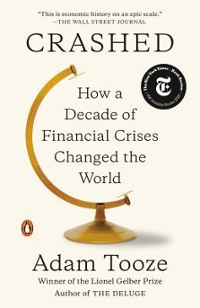My homework.
3. In order to hedge its Mexican peso earnings, All-American is considering borrowing MXN 25 million, but is concerned about losing its uso interest tax shield. The exchange rate is UsD/MXN 0.4, rip = 8%, and ry* 7 = 6%. The tax rate is 35 percent. (a) What is All-American's tax shield from borrowing in uso? (b) What is All-American's tax shield from borrowing in MXN? (c) What is the risk-adjusted expected tax shield from borrowing in MXN?1. Using the following data, compute the cost of hedging for each forward contract in terms of implicit commission and in terms of the extra spread as a percent of the midpoint spot rate. Maturity Rates Bid-ask | Hedging cost | Extra spread Spot 49.858-49.898 0.040 Fwd 30 days 49.909-49.965 0.056 Fwd 60 days 49.972-50.043 0.071 Fwd 90 days 50.061-50.157 0.096 Fwd 180 days 50.156-50.292 0.1362. The Dutch manufacturer Cloghopper has the following JrY commitments: . A/R of jPY 1,000,000 for thirty days. . A/R of jPY 500,000 for ninety days. . Sales contract (twelve months) of Jry 30,000,000. . A forward sales contract of joy 500,000 for ninety days. . A deposit that at maturity, in three months, pays Jry 500,000. . A loan for which Cloghopper will owe jpY 8,000,000 in six months. . A/P of JPY 1,000,000 for thirty days. . A forward sales contract for jrY 10,000,000 for twelve months. . A/P of JPY 3,000,000 for six months. (a) What is Cloghopper's net exposure for each maturity? b) How would Cloghopper hedge the exposure for each maturity on the forward market? (c) Assume that the interest rate is 5 percent (compound, per annum) for all maturities and that this rate will remain 5 percent with certainty for the next twelve months. Also, ignore bid-ask spreads in the money market. How would the company hedge its exposure on the spot market and the jPY money market? Describe all money-market transactions in detail. 15:01 on 8 March 2009 P. Sercu, K.U.Leuven SB&E 84 CHAPTER 13. MEASURING EXPOSURE TO EXCHANGE RATES (d) If the interest rate is 5 percent (compound, per annum) for all maturities and will remain 5 percent with certainty for the next twelve months, how would the company hedge its exposure on the forward market if only one forward contract is used? (e) Assume that Cloghopper prefers to use traded options rather than for- ward contracts. The option contracts are not divisible, have a life of either 90, 180, 270, or 360 days, and for each maturity the face value of a contract is jpY 1,000,000. How could Cloghopper hedge its exposure? Do the options offer a perfect hedge for each maturity? (f) Drop the assumption of a flat and constant term structure. If Cloghopper wants to hedge its exchange rate exposure using one forward contract and its interest rate exposure using FRA contracts, how would the anal- ysis of parts (c) and (d) be affected? A verbal discussion suffices. (g) The term structure is flat right now (at 5 percent p.a., compound), but is uncertain in the future. Consider the spot hedge of part (c). If, instead of FRAs, duration is used to eliminate the interest risk, how should Cloghopper proceed?1. The Basel accord requires that banks must meet, on a daily basis, a capital requirement based on the Market Risk Charge, given by 60 MRCIMA = Max(k 60 VaRI-i, VaRI-1) + SRC, The multiplication factor, k, is set based on the quality of the bank's risk management system, subject to an absolute minimum of 3. Chico Marx, the Governor of the Central Bank of Freedonia, decides one fine day that all banks in Freedonia will henceforth calculate the capital requirement based on a multiplication factor of 5 or above instead of 3 or above. What are the implications of such a move on Freedonian banks?4. You boughtan option that limits the interest rate on a future six-month deposit to at least 10 percent p.a. (a) If, at the beginning of the six-month period, the interest rate is 11 percent, what is the market value of this option? (b) What is the option's value if the interest rate turns out to be 8 percent?2. What's wrong with the following statement: "The CAPM says that the expected return on a given stock j is equal to the best possible replication that one can obtain using the risk-free assets and the set of all risky assets (other than stock9. A cylinder option on the sale of foreign currency is a contract defined as follows: . If ST > X1, you sell foreign exchange at X1, the floor . If ST > X2, where X2 > X1, you sell at X2, the cap . If X1 S ST S X2, you sell at ST. This contract restricts the uncertainty about the futures sales price to the range X1 ST S X2. For instance, Barrel Imports has a sales contract to sell CAD against UsD: 15:01 on 8 March 2009 P. Sercu, K.U.Leuven SB&E 60 CHAPTER 8. CURRENCY OPTIONS (1): CONCEPTS AND USES . At X1 = USD/CAD 0.80 if the CAD trades below 0.80. . At X2 = USD/CAD 0.90 if the CAD trades above 0.90. . The spot rate if that rate is between 0.80 and 0.90. (a) Show the payoff of the contract graphically. (b) Show that it can be viewed as a combination of European-style options. (c) Illustrate the value of a foreign currency claim hedged with such a con- tract













